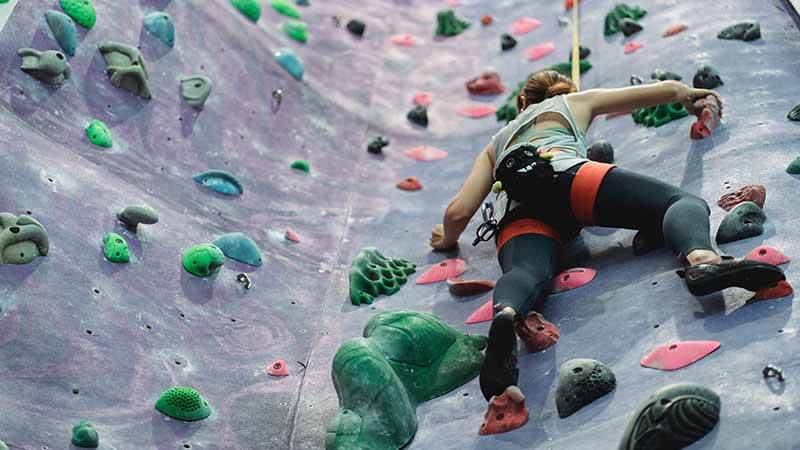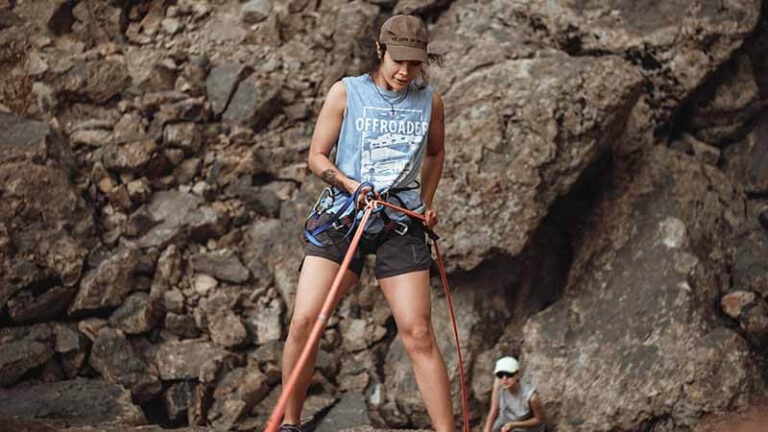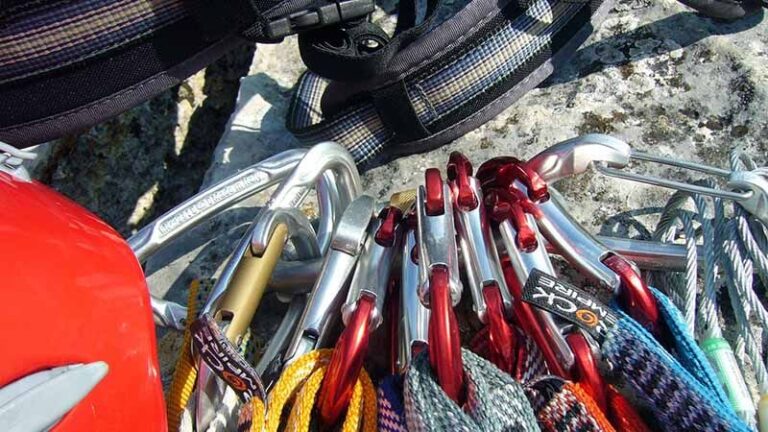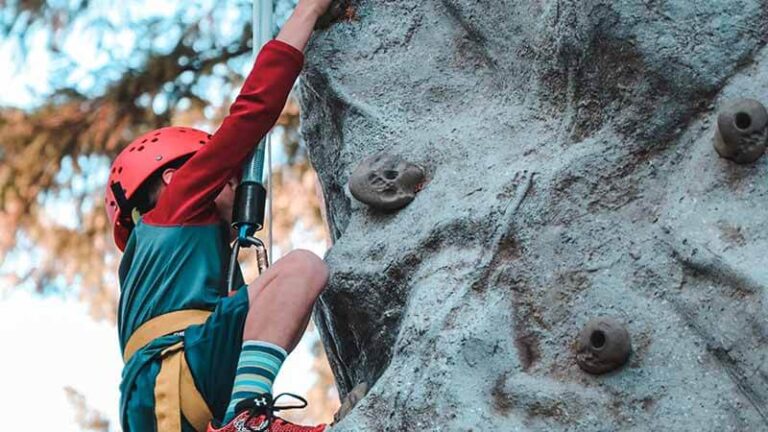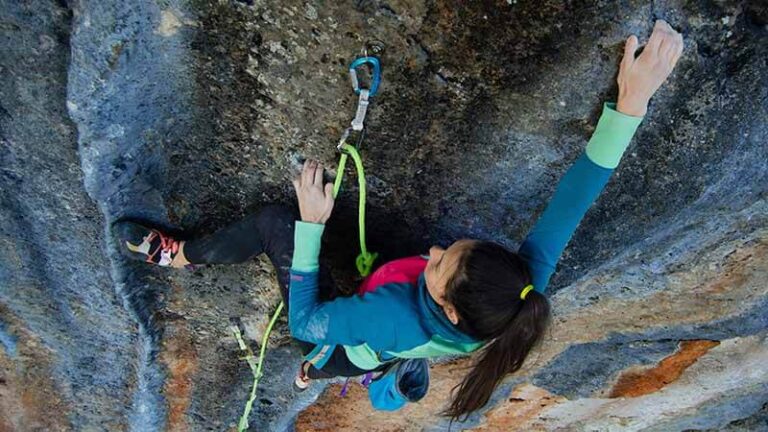How Dangerous Is Indoor Rock Climbing?
Indoor rock climbing is a sport in which participants climb artificial rock walls or constructions constructed of synthetic materials such as plastic or fiberglass. It is a popular pastime for people looking for physical and mental challenges, and its popularity has grown in recent years. Indoor rock climbing has a wide range of routes and levels of difficulty, making it suitable for people of all ages and ability levels.
A variety of causes have contributed to the rise in the popularity of indoor rock climbing. One of the primary reasons is its ease of access. Climbing gyms are becoming increasingly common, and many provide introductory instruction and equipment rentals, making it possible for anybody to enjoy the sport. Indoor rock climbing is also a fun and challenging workout that can help with strength, endurance, and flexibility.
Importance of safety in the sport
While indoor rock climbing can be a fun and rewarding activity, it is not without risk. Physical ailments such as sprains, fractures, and head traumas are among the dangers. Anxiety and fear of heights are two examples of psychological dangers. Without sufficient safeguards, health concerns such as dehydration and heat fatigue can arise. Furthermore, equipment failure is a potential hazard that can result in serious injury or even death.
As a result, it is critical to prioritize safety in the sport of indoor rock climbing. This entails correct training and skill, as well as the use of appropriate, well-maintained equipment. Climbing gyms should also have clear safety guidelines and rules in place, and climbers should use the partner check method and have a spotter available when needed.
Another important part of indoor rock climbing safety is risk management. Before each climb, risk assessment and management should be undertaken, and climbers and climbing gym staff should collaborate to manage and limit hazards. In the event of an accident or injury, it is equally critical to have an emergency response plan in place.
Risks and Dangers of Indoor Rock Climbing
Indoor rock climbing can be an exciting and challenging sport, but it also has inherent risks that must be recognized and controlled in order to maintain safety. The following are some of the most common risks and dangers related to indoor rock climbing:
Physical Injuries
One of the most significant concerns linked with indoor rock climbing is physical injury. Sprains, strains, fractures, dislocations, and head injuries are examples of such injuries. Falls are a common cause of injury, and even a short fall can inflict significant damage depending on the climber’s landing position and other variables. Overuse injuries, such as tendinitis and muscular strains, can also arise if climbers do not warm up properly or participate in excessive climbing without adequate rest.
Psychological Risks
Indoor rock climbing can also be dangerous psychologically, especially for climbers who are afraid of heights or suffer from anxiety. Climbers who are afraid of heights may freeze or panic during a climb, resulting in accidents and injuries. Anxiety can also have a negative effect on a climber’s performance and ability to focus, making it difficult to complete a climb safely.
Health Risks
Climbing, and especially indoor rock climbing, can be physically taxing. Climbers encounter typical health hazards such as dehydration and heat exhaustion, especially if they are climbing in a hot and humid climate. These dangers can be reduced by staying hydrated and taking pauses.
Potential Dangers of Equipment Failure
Climbing equipment is built to endure the forces and stresses of climbing, but it can fail if not properly maintained or used incorrectly. Failure of equipment can result in falls, injuries, or worse. Climbers must thoroughly inspect their gear before each climb and follow manufacturer instructions for maintenance and replacement.
Safety Measures for Indoor Rock Climbing
Indoor rock climbing is a fun and thrilling exercise that provides climbers with both physical and mental difficulties. However, it is critical to prioritize safety in order to avoid injuries and accidents. The following safety precautions are essential for maintaining a safe indoor rock climbing environment:
Proper Equipment and Maintenance
One of the most important safety considerations in indoor rock climbing is to use suitable equipment and maintain it. To ensure its efficiency, climbing equipment such as ropes, harnesses, carabiners, and belay devices must be in good shape and regularly maintained. Climbers should carefully inspect their gear before each climb and replace any damaged or worn-out gear as soon as possible. It is also critical to use gear that is adequate for the difficulty of the climb and the weight of the climber.
Proper Training and Technique
To safeguard their safety, climbers should receive sufficient training and acquire proper climbing skills. The climbing technique entails precise footwork, body alignment, and rock movement. Climbers should also cultivate good belaying skills to guarantee that the rope is always securely fastened and secured.
Safety Guidelines and Rules at Climbing Gyms
To protect the safety of all climbers, climbing gyms should have explicit safety guidelines and rules in place. These guidelines and standards should include information on proper equipment use, climber behavior norms, and climbing route rules. Climbing gyms should also have experienced staff members who can provide climbers with teaching and help as needed.
Partner Check System and the Role of Spotters
In indoor rock climbing, the partner check method is a crucial safety safeguard. Climbers use this approach to double-check each other’s equipment before each ascent. Before climbing, climbers should double-check their partner’s harnesses, knots, and belaying equipment to verify they are properly put up. Spotters are another vital safety precaution in climbing. A spotter is someone who stands beneath the climber and is ready to help if the climber falls. Spotters can assist reduce the severity of a fall and prevent major injuries.
Risk Management in Indoor Rock Climbing
Indoor rock climbing necessitates risk management. Risk management entails identifying possible dangers and taking steps to prevent or mitigate their impact. When managing risks in indoor rock climbing, keep the following factors in mind:
Importance of Risk Assessment and Management
The process of detecting and analyzing potential climbing dangers is known as risk assessment. It entails taking into account the chance of an accident or injury occurring as well as the severity of the consequences. Risk management entails taking actions to avoid or mitigate these hazards. To protect the safety of all climbers, climbers and climbing gyms must complete a detailed risk assessment and management plan.
Role of the Climber in Managing Risks
Climbers must accept responsibility for risk management while climbing. They must analyze the dangers of each climb and ensure that they have the necessary equipment and training to finish it safely. Climbers should also speak with their partners and any spotters to ensure that everyone is aware of the dangers and how to avoid them.
Role of the Climbing Gym in Managing Risks
Climbing gyms are responsible for risk management for their customers. This entails maintaining their facilities and equipment, following safety rules, and giving climbers with training and instruction. Climbing gyms should also undertake frequent risk assessments in order to identify potential hazards and implement precautions.
Importance of Emergency Response Plan
Accidents in climbing can occur despite the finest risk management efforts. In the event of an accident, it is critical to have an emergency response plan in place. Procedures for calling emergency services, administering first aid, and removing the injured individual from the climbing area should be included in the response plan. Climbing gyms should also have a mechanism in place for tracking and reporting accidents so that similar situations can be avoided in the future.
Conclusion
Indoor rock climbing is a popular sport that provides physical as well as mental difficulties. However, as with any sport, there are risks and dangers that must be managed to ensure climbers’ safety. Physical injuries, psychological hazards, health risks, and probable equipment failures are all risks connected with indoor rock climbing.
Climbers and climbing gyms should take certain safety steps to mitigate these dangers, such as assuring adequate equipment and maintenance, proper training and technique, adhering to safety guidelines and rules at climbing gyms, and establishing a partner check system and the role of spotters. Indoor rock climbing requires risk management, which includes identifying and assessing potential hazards, taking precautions to avoid accidents, and having an emergency plan in place.
Indoor rock climbing may be a safe and satisfying activity for those involved if sufficient safety precautions and risk management are in place. Climbers must accept responsibility for risk management when climbing and communicate with their partners and spotters to ensure that everyone is aware of the dangers and how to avoid them. Climbing gyms should also play a role in risk management for their customers by providing a safe and pleasurable environment for climbers.

